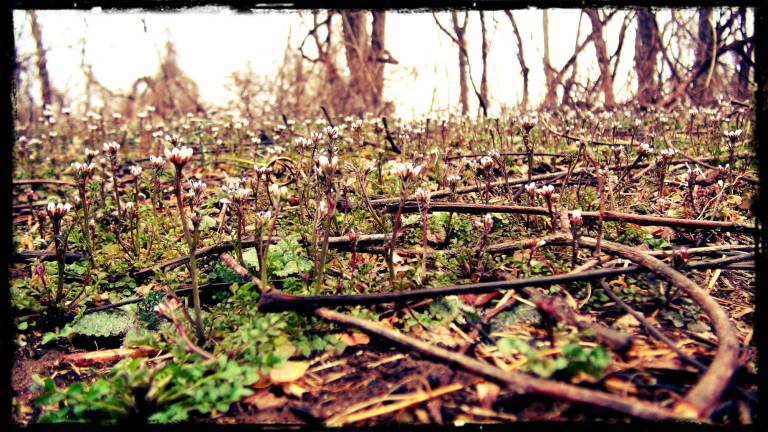Kale’s wild cousins

That yellow stuff you put on hot dogs? That’s right, mustard. Mustard is famous for its hot-dog-embellishing seeds, but it is actually a common name for an entire plant family known as brassicacea, or brassica for short.
Through thousands of years of co-evolution with humans, the original lowly field mustard has turned into an incredible variety of our commercially grown food, like broccoli, cabbage, mustard greens, brussels sprouts, kale, collards, and arugula.
Luckily there are also wild edible mustards that you can find growing just about anywhere, from your backyard, to any park, for free. Nature plants them readily, and it’s mighty kind of her to do so.
The wonderful thing about identifying the family known as brassica is that all species known, no matter what continent, are edible. That means multiple thousands of species of free vegetables wherever our travels take us, if we just learn to identify it.
Here I will focus on two commonly found plants, which the uninitiated often mistake for weeds: hairy bittercress and garlic mustard. A word to the wise: no matter how much you like it, don’t go and plant garlic mustard. There’s already plenty and it’s known as an invasive species, so when you eat it you’re actually helping native populations.
If you’re familiar with the shape and leaf of arugula or watercress, then you’re on your way to identifying its wild relatives. Leaf shape is a good indicator – but not sufficient to bet your life on, since plants in the rose family have this type of leaf but are not edible. I recommend that once you have located a stand, and are fairly confident, wait and watch for them to flower and confirm the flower in a field guide. It never hurts to wait to be sure, and it can hurt to rush the process of getting to know wild plants, just the same as if we rush into a partnership or marriage.
A key identifying factor for all of the flowers in this family is that they have a cluster of flowers with four flower pedals in a cross shape. In the fall, after the flower is pollenated, it will develop a whorled seed pod with long seed pods containing many symmetrically round seeds in each. Once they are in this stage, all of the seeds of this family are edible and can be prepared as a mustard substitute or addition, so that we can get some wild in our lives.
Hairy bittercress is a somewhat small and low growing plant that is abundant in the springtime. It has leaves similar to arugula, and produces tiny white flowers. This plant is not very large, but it makes up for its size with its powerful taste and nutritional punch as well as by growing in abundant stands. I love to eat this plant raw when I am out exploring, or gather it and add it to salads or stir fries at home.
The easiest way to harvest is just to snip off the succulent flower heads. This will allow the plant to continue to seed and regenerate itself in the same general area. If you harvest the tops of the plant after its flowers wither away, they will be too tough to chew, so mind texture. The leaves can be eaten at any stage, but often have grit from dirt stuck in their leaves, so either wash carefully or enjoy crunching. Dirt don’t hurt! (It just wears down the teeth eventually.)
Garlic mustard starts off as a rosette – a circular arrangement of leaves – and will form a large stalk in mid-summer. But in the late spring it becomes one of my favorite young vegetables, similar to wild broccolini. The seeds are edible and make a wonderful addition to stir fry or pesto, along with the roots, which taste like wasabi. The roots are most succulent and least woody from fall to spring the following year. It’s nice to eat a vegetable that comes with its own spices! The leaves, tossed with tamari soy sauce, make an excellent dehydrated chip, similar to kale chips but with more bite.
Questions on plant IDs? Email Dan@Returntonature. And remember, don’t eat any plant you’re not sure about.